p53 protein regulates Hsp90 ATPase activity and thereby Wnt signaling by modulating Aha1 expression
- PMID: 24451373
- PMCID: PMC3945316
- DOI: 10.1074/jbc.M113.532523
p53 protein regulates Hsp90 ATPase activity and thereby Wnt signaling by modulating Aha1 expression
Retraction in
-
Withdrawal: p53 protein regulates Hsp90 ATPase activity and thereby Wnt signaling by modulating Aha1 expression.J Biol Chem. 2020 Jan 3;295(1):289. doi: 10.1074/jbc.W119.012134. J Biol Chem. 2020. PMID: 31900371 Free PMC article. No abstract available.
Abstract
The p53 tumor suppressor gene encodes a homotetrameric transcription factor which is activated in response to a variety of cellular stressors, including DNA damage and oncogene activation. p53 mutations occur in >50% of human cancers. Although p53 has been shown to regulate Wnt signaling, the underlying mechanisms are not well understood. Here we show that silencing p53 in colon cancer cells led to increased expression of Aha1, a co-chaperone of Hsp90. Heat shock factor-1 was important for mediating the changes in Aha1 levels. Increased Aha1 levels were associated with enhanced interactions with Hsp90, resulting in increased Hsp90 ATPase activity. Moreover, increased Hsp90 ATPase activity resulted in increased phosphorylation of Akt and glycogen synthase kinase-3β (GSK3β), leading to enhanced expression of Wnt target genes. Significantly, levels of Aha1, Hsp90 ATPase activity, Akt, and GSK3β phosphorylation and expression of Wnt target genes were increased in the colons of p53-null as compared with p53 wild type mice. Using p53 heterozygous mutant epithelial cells from Li-Fraumeni syndrome patients, we show that a monoallelic mutation of p53 was sufficient to activate the Aha1/Hsp90 ATPase axis leading to stimulation of Wnt signaling and increased expression of Wnt target genes. Pharmacologic intervention with CP-31398, a p53 rescue agent, inhibited recruitment of Aha1 to Hsp90 and suppressed Wnt-mediated gene expression in colon cancer cells. Taken together, this study provides new insights into the mechanism by which p53 regulates Wnt signaling and raises the intriguing possibility that p53 status may affect the efficacy of anticancer therapies targeting Hsp90 ATPase.
Keywords: Colon Cancer; Hsp90; Wnt Pathway; p53; β-Catenin.
Figures
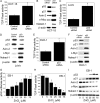
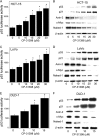
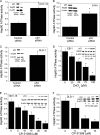
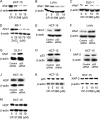

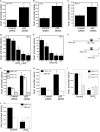
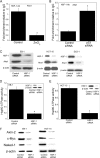
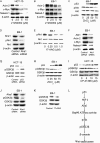


Comment in
-
Findings of Research Misconduct.Fed Regist. 2023 Sep 13;88(176):62800-62803. Fed Regist. 2023. PMID: 37736072 Free PMC article. No abstract available.
-
Findings of Research Misconduct.Fed Regist. 2023 Sep 13;88(176):62803-62807. Fed Regist. 2023. PMID: 37736073 Free PMC article. No abstract available.
Similar articles
-
p53 modulates Hsp90 ATPase activity and regulates aryl hydrocarbon receptor signaling.Cancer Prev Res (Phila). 2014 Jun;7(6):596-606. doi: 10.1158/1940-6207.CAPR-14-0051. Epub 2014 Apr 15. Cancer Prev Res (Phila). 2014. Retraction in: Cancer Prev Res (Phila). 2022 Jun 2;15(6):408. doi: 10.1158/1940-6207.CAPR-22-0207. PMID: 24736433 Free PMC article. Retracted.
-
Hsp90 and PKM2 Drive the Expression of Aromatase in Li-Fraumeni Syndrome Breast Adipose Stromal Cells.J Biol Chem. 2016 Jul 29;291(31):16011-23. doi: 10.1074/jbc.M115.698902. Epub 2016 Jun 1. J Biol Chem. 2016. Retraction in: J Biol Chem. 2020 Jan 3;295(1):290. doi: 10.1074/jbc.W119.012135. PMID: 27467582 Free PMC article. Retracted.
-
Biological and structural basis for Aha1 regulation of Hsp90 ATPase activity in maintaining proteostasis in the human disease cystic fibrosis.Mol Biol Cell. 2010 Mar 15;21(6):871-84. doi: 10.1091/mbc.e09-12-1017. Epub 2010 Jan 20. Mol Biol Cell. 2010. PMID: 20089831 Free PMC article.
-
p23 and Aha1: Distinct Functions Promote Client Maturation.Subcell Biochem. 2023;101:159-187. doi: 10.1007/978-3-031-14740-1_6. Subcell Biochem. 2023. PMID: 36520307 Review.
-
Aha-type co-chaperones: the alpha or the omega of the Hsp90 ATPase cycle?Biol Chem. 2020 Mar 26;401(4):423-434. doi: 10.1515/hsz-2019-0341. Biol Chem. 2020. PMID: 31782942 Review.
Cited by
-
Mutation of essential Hsp90 co-chaperones SGT1 or CNS1 renders yeast hypersensitive to overexpression of other co-chaperones.Curr Genet. 2014 Nov;60(4):265-76. doi: 10.1007/s00294-014-0432-3. Epub 2014 Jun 13. Curr Genet. 2014. PMID: 24923785
-
Heat shock proteins and hormesis in the diagnosis and treatment of neurodegenerative diseases.Immun Ageing. 2015 Nov 4;12:20. doi: 10.1186/s12979-015-0046-8. eCollection 2015. Immun Ageing. 2015. PMID: 26543490 Free PMC article. Review.
-
p53 modulates Hsp90 ATPase activity and regulates aryl hydrocarbon receptor signaling.Cancer Prev Res (Phila). 2014 Jun;7(6):596-606. doi: 10.1158/1940-6207.CAPR-14-0051. Epub 2014 Apr 15. Cancer Prev Res (Phila). 2014. Retraction in: Cancer Prev Res (Phila). 2022 Jun 2;15(6):408. doi: 10.1158/1940-6207.CAPR-22-0207. PMID: 24736433 Free PMC article. Retracted.
-
Leptin regulation of the p53-HIF1α/PKM2-aromatase axis in breast adipose stromal cells: a novel mechanism for the obesity-breast cancer link.Int J Obes (Lond). 2018 Apr;42(4):711-720. doi: 10.1038/ijo.2017.273. Epub 2017 Nov 6. Int J Obes (Lond). 2018. PMID: 29104286 Free PMC article.
-
The Antifungal Activity of Loquat (Eriobotrya japonica Lindl.) Leaves Extract Against Penicillium digitatum.Front Nutr. 2021 Aug 20;8:663584. doi: 10.3389/fnut.2021.663584. eCollection 2021. Front Nutr. 2021. PMID: 34490318 Free PMC article.
References
-
- Polakis P. (2000) Wnt signaling and cancer. Genes Dev. 14, 1837–1851 - PubMed
-
- Bienz M., Clevers H. (2000) Linking colorectal cancer to Wnt signaling. Cell 103, 311–320 - PubMed
-
- Kinzler K. W., Vogelstein B. (1996) Lessons from hereditary colorectal cancer. Cell 87, 159–170 - PubMed
-
- Mikels A. J., Nusse R. (2006) Wnts as ligands: processing, secretion and reception. Oncogene 25, 7461–7468 - PubMed
Publication types
MeSH terms
Substances
Grants and funding
LinkOut - more resources
Full Text Sources
Other Literature Sources
Research Materials
Miscellaneous

